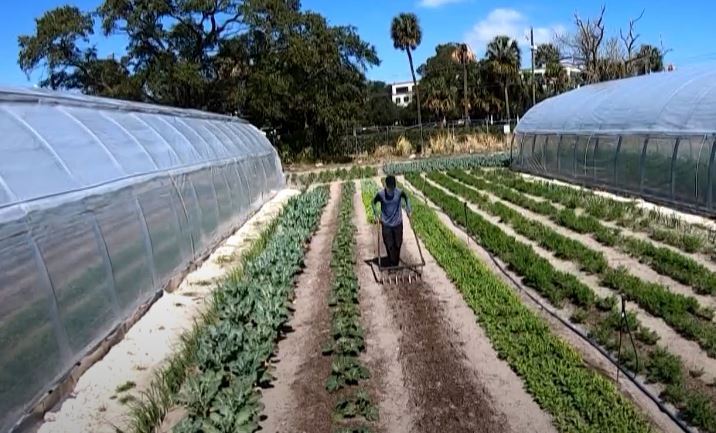OPINION: Community farms, gardens should be invested in for all of Tampa

In downtown Tampa, a new urban farm has blossomed from the efforts of three local farmers and the Tampa Housing Authority, turning what was once two acres of concrete into an abundant supply of nutritious foods.
Meacham Urban Farm is located in a mixed-income housing development called the Encore District in Tampa and hosted a grand opening Feb. 9. It will officially open to the public Feb. 13, providing the locals with healthy options such as organic produce, eggs and meat, according to the farm’s website.
Community gardens and farms can help increase local economies, decrease food insecurity and improve air and water quality. Through this project, the City of Tampa is advancing the lives of its citizens by allowing space in low-income neighborhoods for such programs and should continue to invest in urban farms all around the city.
The farm is funded through a $725,000 federal grant from Choice Neighborhood Initiative, according to the U.S. Department of Housing and Urban Development (HUD). This grant will not only be for agricultural purposes but also help the farm host an educational program for Hillsborough County students, which will begin when it opens Saturday.
The Hillsborough County School District has leased the lot from Encore for at least five years, making it available for students to conduct research and younger students to learn about plants and environmentalism while it supplies food to the surrounding neighborhoods.
The food produced through establishing more community farms would help decrease food insecurity in Tampa. Downtown Tampa, University and the location of Meacham Urban Farm west of Ybor City are all considered food deserts by the U.S. Department of Agriculture, which are locations with limited access to nutritious food.
The distribution of an expected 60,000 pounds of food from the site this year, according to HUD, would provide citizens with easy access to healthier options than nearby chains like McDonald’s and Wawa.
Despite many grocery store chains owning locations all over the city, Publix and Walmart have both previously refused to place a location in Encore, according to Jay Miller, the president of J Square Developers, who would have overseen the stores’ constructions.
City officials cannot rely on big companies such as Walmart and Publix to provide for low-income citizens who experience limited access to nutritious meals. Investing in community gardens and farms would help less fortunate citizens more easily purchase healthy food.
Fighting food insecurity is not the only positive of these green spaces. Initiating more community farms will also be beneficial to Tampa’s environment since the city is an urban heat island, a city that undergoes warmer temperatures than the locations around it because of human activities as well as the concrete and asphalt absorbing heat from sunlight. Cities thus experience elevated greenhouse gas emissions, higher levels of air pollution and poor water quality, according to the U.S. Environmental Protection Agency.
Professor James Mihelcic in the Department of Civil and Environmental Engineering said adding greenery to Tampa will greatly improve the city’s environment.
“[Adding green space] would help to manage seasonal flooding and make our city more resilient to large flooding events from hurricanes, and there are large improvements in water quality which are important for those who fish, boat, kayak, wildlife view and just enjoy our water quality,” said Mihelcic.
Mihelcic offered temporary solutions while farms are established, including the creation of rain gardens, which are small ponds created by ditches and surrounded by plants used to collect stormwater and prevent runoff, and the promotion of green roofs, which consist of adding gardens and plants on top of buildings.
Green roofs have been constructed in other cities that experience the urban heat island effect. New York City has recorded various benefits from contrasting the greenery of Central Park with its large skyscrapers. The greenery in the park absorbs large amounts of carbon dioxide and keeps the city cooler, according to Central Park’s official website.
The New York City local government estimates that carbon dioxide levels will be reduced to the equivalent of having one million cars off the road by 2030 due to these efforts.
The creation of community gardens and farms would benefit Tampa, and the city should continue to invest in adding greenery around the area. Citizens would benefit from the nutritious food grown at the sites, students can learn from the resource and the city’s air and water quality would improve.







